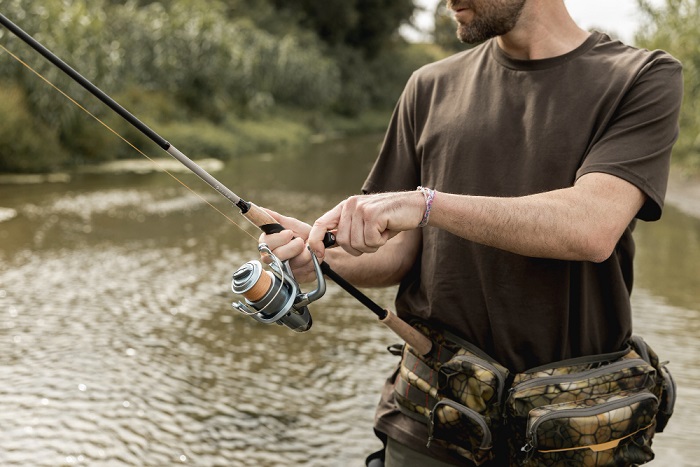Reef fishing in Australia is an exhilarating pursuit that offers anglers the opportunity to explore some of the world’s most biodiverse marine ecosystems. With its stunning coral reefs and abundant marine life, Australia’s coastal waters provide the perfect backdrop for an unforgettable fishing adventure. In this comprehensive guide, we will delve into the world of reef fishing in Australia, sharing tips, techniques, and everything you need to ensure a successful and rewarding experience.
Choosing the Right Location for Reef Fishing in Australia
Australia boasts an extensive coastline, and choosing the right location for your reef fishing adventure is crucial. Here are some popular reef fishing destinations in Australia:
- Great Barrier Reef: The world-renowned Great Barrier Reef is a bucket-list destination for reef fishing enthusiasts. With its vibrant coral formations and diverse marine life, this natural wonder offers an unparalleled fishing experience.
- Coral Sea: Located beyond the Great Barrier Reef, the Coral Sea is teeming with game fish, making it an ideal location for those seeking trophy catches.
- Ningaloo Reef: Western Australia’s Ningaloo Reef is another top-notch reef fishing destination. Known for its pristine waters and abundant fish species, Ningaloo offers a unique and rewarding fishing experience.
- Tropical North Queensland: The waters off the coast of Tropical North Queensland are home to a wide range of reef species, including coral trout, red emperor, and Spanish mackerel.
Reef Fishing Gear and Tackle
Selecting the right gear and tackle is essential for a successful reef fishing trip. Here’s a list of gear you’ll need:
- Rods and Reels: Choose medium to heavy-duty rods and reels that can handle the strength of reef-dwelling species. Spinning or overhead reels are suitable options.
- Fishing Line: Use braided or monofilament fishing lines with a breaking strength of 20 to 50 pounds.
- Hooks and Bait: Employ a variety of hooks in sizes ranging from 2/0 to 6/0, depending on the target species. Common baits include squid, pilchards, and live or cut baitfish.
- Leaders: Attach a fluorocarbon leader to reduce visibility and increase the chances of hooking shy reef fish.
- Sinkers and Rigs: Use appropriate sinkers to help your bait reach the desired depth. Pre-made reef rigs with multiple hooks are also effective for reef fishing.
- Gaff and Landing Net: A gaff and landing net are essential for safely landing larger fish without injuring them or losing them to the reef.
Reef Fishing Techniques and Tips
Successful reef fishing requires a combination of techniques and strategies. Here are some tips to help you maximize your catch:
- Bottom Fishing: Most reef species inhabit the bottom of the ocean floor. Drop your bait or lure to the desired depth and slowly jig or retrieve it to entice strikes.
- Understanding Tides: Pay attention to tide changes, as they can significantly impact fish behavior. Many reef fish are more active during tidal movements.
- Patience and Observation: Reef fishing often requires patience. Watch for signs of fish activity, such as birds diving or surface splashes, and be prepared to wait for the right opportunity.
- Catch and Release: To preserve the health of the reef ecosystem, consider catch and release practices for non-target or undersized species. Follow local regulations and size limits.
Responsible Reef Fishing Practices
When engaging in reef fishing in Australia, it’s crucial to practice responsible and sustainable fishing to protect these fragile marine environments. Here are some guidelines to follow:
- Know the Regulations: Familiarize yourself with local fishing regulations, including size and bag limits, seasonal closures, and protected areas.
- Respect the Environment: Avoid damaging coral reefs by anchoring in designated areas and handling fish with care.
- Dispose of Waste Responsibly: Properly dispose of trash and fishing waste to prevent pollution.
- Use Barotrauma Release Tools: Barotrauma can affect fish caught at depth. Use release tools or venting devices to safely return fish with expanded swim bladders to the depths.
Conclusion
Reef fishing in Australia is an adventure like no other, offering the chance to catch a diverse array of species while surrounded by breathtaking underwater landscapes. By selecting the right location, equipping yourself with the appropriate gear, mastering reef fishing techniques, and practicing responsible fishing, you can ensure a rewarding and environmentally friendly reef fishing experience. So, set sail for the stunning reef waters of Australia, and get ready for an unforgettable adventure in the world of reef fishing Australia.






